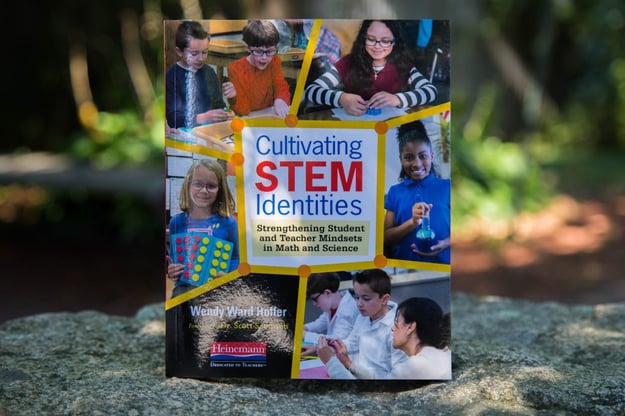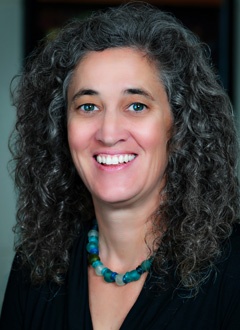
STEM content can feel daunting. Many elementary teachers don’t yet think of themselves as mathematicians or scientists and lack confidence in their abilities to teach STEM content. Who you are as a teacher informs who your students become. Consciously or unconsciously, your beliefs about STEM impact your behavior and instruction.
In Cultivating STEM Identities: Strengthening Student and Teacher Mindsets in Math and Science, Wendy Ward Hoffer writes about how we can each grow our own confidence and competence as STEM thinkers and learners, then intentionally pass these attributes on to our students.
In this post, adapted from the new book, Wendy explains the importance of identity.
What Is a STEM Identity?
We each have many identities—racial identity, professional identity, sexual identity, our role within a family—all these aspects of ourselves form who we are. Some components of our identity can bring us great joy, as in, “I love being a mom when you let me sleep past 5:30 a.m.,” while others can cause us to struggle against discrimination or limiting beliefs, as in “Girls can’t be astronauts.” (Mae Jemison, of course, proves that wrong, but nonetheless, we swim among some challenging cultural beliefs about girls’ opportunities in the STEM fields.) Our identities are informed by our upbringing, our experiences, and society at large, and can shift across time either unconsciously or through deliberate effort.
I have a friend who was not a morning person; in fact in college she had a bumper sticker that stated, “Not a morning person doesn’t even begin to cover it.” That was her identity when it came to sleep schedules; yet upon arriving in adulthood, with a real job that started at 8:00 a.m., she found the need to revise her identity. With improved sleep management and changes in diet and exercise, she intentionally reset her biological clock. She now relishes mornings and awakens each day before her children to enjoy the smells and sounds of dawn, an intentional identity change from night owl to morning person.
How you think of yourself as a scientist, technology user, engineer, or mathematician is your STEM identity. (We’ll get into more detail about STEM identities and the factors that shape them in Chapter 1.) Whoever you are, wherever you came from, whether you love troubleshooting Internet access glitches or hate doing your own taxes, your STEM identity has a hold on you. Similarly, each of your students walks into your classroom each year with a STEM identity all her own, forged through her early life experiences.
You work with young children. You know they are innately curious: they want to rip apart a broken blender to see what’s inside, to watch a pair of crickets “do it,” to stick their own finger in a mousetrap just to confirm that it will actually snap. Ouch.
“Why did that happen?”
“How did they make it do that?”
“Why does it hurt?”
“Why would you do that to a little mousey?”
“Why aren’t you explaining faster?”
“Why?”
Their very nature is as inquirers: research reports that preschoolers ask their parents one hundred questions a day, while middle schoolers ask virtually none (Bronson and Merryman 2010). How can we shift this trend and ensure that all students sustain their innate inquisitiveness and develop identities as curious, productive problem solvers? STEM identities can be intentionally cultivated. This is a book about why they ought to be and how we each can serve learners collectively and society as a whole by creating opportunities for students to be and see themselves as capable and successful scientists and mathematicians.
♦ ♦ ♦ ♦
Cultivating STEM Identities is out now. Learn more here.

Wendy Ward Hoffer serves as Senior Director of Education for the Denver-based Public Education and Business Coalition (PEBC), and travels nationally to provide professional learning to math and science teachers at all levels. She is passionate about promoting rich thinking in all content areas, especially math and science. Wendy received an MA in Science Education from Stanford University and earned National Board Certification while teaching middle school math and science.
Follow her on Twitter @wendywardhoffer


